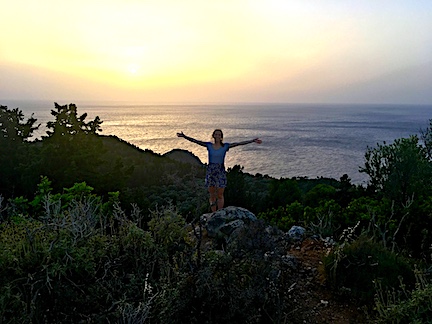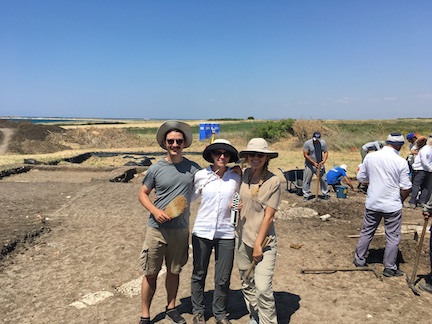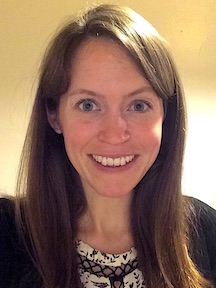By Jordan Willson
Jessica Lamont first visited Greece as an undergraduate, after her freshman year of college. The trip, which she took with her father, was short and only allowed her to visit the tourist hotspots, but for Lamont, it was the beginning of a deep love for Greek history and culture.
“It’s like thinking back to the first time you met your partner or best friend,” Lamont said. “A quick exchange that would over time deepen and evolve and change you.”
Lamont (ΦBK, William & Mary) earned her Ph.D. from Johns Hopkins University and is now an assistant professor of Greek history and culture at Yale University.
In the spring of this year, Lamont was awarded the Phi Beta Kappa Society’s 2019 Mary Isabel Sibley Fellowship in Greek Studies, giving her a $20,000 stipend that she has been using to research health and healing in Classical Greece.
Lamont said much of her research, including studying Greek curse tablets and voodoo dolls, is epigraphic in nature, requiring time spent on the ground in Greece.
“I spent five months in and out of the basements of Greek museums transcribing tiny Greek letters into texts, and interpreting those texts within the social and historical contexts that give rise to them, and much of this cannot be done from a library or office overseas,” Lamont said.
She spent much of her research time in Athens, but Lamont was able to travel around the islands some – a favorite being Astypalaia – as well as up to northern Greece to an ancient trading port called Styrme, where she has worked for many years on an archaeological excavation.
Lamont is currently working on two projects, hoping to create books from both. These projects demonstrate how individuals were making sense of the world around them and dealing with hardship, disease, conflict, and risk.
Her first project examines shifting notions of health and disease in Classical Greece and the emergence of specialized healing cults that “blossomed amidst the crises of the Peloponnesian War and evolving traditions of Hippocratic medicine,” Lamont explained.
Her second project is devoted to the history of Greek curse tablets and magic in Classical antiquity.
One of the most interesting projects she worked on this past summer, relating to her interest in ancient magic, involved studying a ceramic pot inscribed with more than 30 personal names. The pot had been pierced by a large iron nail and buried beneath the floor of an industrial building in the Athenian Agora. Lamont described the pot as containing parts of a young chicken and observed that it must have been related to a magic binding curse.
Lamont is now back to teaching at Yale. She said the research time afforded by the Sibley Fellowship in 2019 has informed and galvanized her teaching, and she enjoys sharing photos and all she learned while abroad with students in the classroom.
The research time afforded by the Sibley Fellowship has been invaluable, Lamont explained. She plans to work on her projects regarding medicine and magic for several years to come.
“The projects continue to expand and take new turns,” she said. “And this is the fun of interdisciplinary scholarship.”

Lamont in Greece during her 2019 research trip.

Lamont (center) at the archaeological excavation site in Styrme.
Jordan Willson graduated recently from of the University of Idaho with a bachelor’s degree in journalism. University of Idaho is home to the Alpha of Idaho chapter of Phi Beta Kappa.




